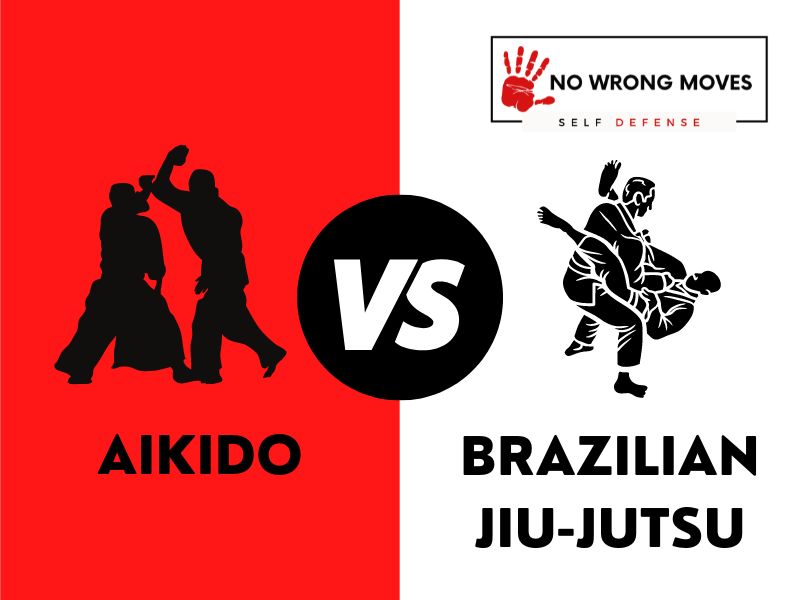
- Aikido Vs. Brazilian Jiu-Jitsu
- What We Know About Aikido
- What We Know About Brazilian Jiu-Jitsu
- Key Elements Of Aikido
- Key Elements Of Brazilian Jiu-Jitsu
- Aikido Rankings & Levels
- Brazilian Jiu-Jitsu Rankings & Levels
- Aikido Vs. Brazilian Jiu-Jitsu Attire
- What A Typical Aikido Training Session Looks Like
- What A Typical Brazilian Jiu-Jitsu Training Session Looks Like
- Aikido Movies
- Conclusion: Aikido Vs. Brazilian Jiu-Jitsu
Martial arts have always been a popular form of exercise, self-defense, and competition. Among the various forms of martial arts, Aikido and Brazilian Jiu-Jitsu are two of the most popular.
While both martial arts have their own unique styles and techniques, they are often compared to each other, with people wondering which one is better.
In this article, we will explore the differences and similarities between Aikido and BJJ and help you decide which one might be right for you.
Aikido Vs. Brazilian Jiu-Jitsu
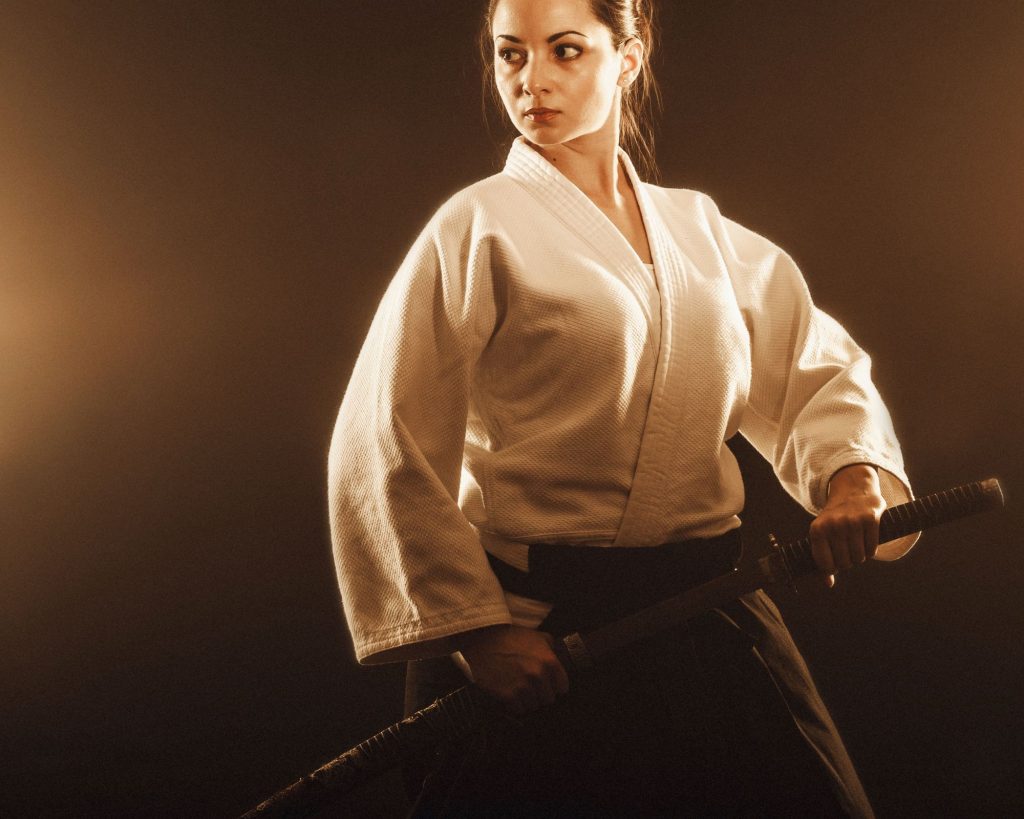
Many people in the martial arts community debate whether Aikido or Brazilian Jiu-Jitsu is the better practice. While both offer unique benefits and principles, there are some key differences that set them apart.
The main difference between Aikido and Brazilian jiu-jitsu is that Aikido focuses on redirecting and blending with an attacker's energy while BJJ emphasizes controlling and submitting the opponent.
Aikido also places heavy emphasis on non-resistance, whereas BJJ uses resistance to control the opponent during ground fighting.
Another key difference is that Aikido focuses on defending against multiple attackers and weapons, whereas BJJ is primarily practiced for one-on-one unarmed self-defense.
There are also differences in the training methods and class structure. Aikido typically includes practicing with both partners and solo exercises, while Brazilian jiu-jitsu classes usually involve sparring with a partner.
Both aikido and BJJ have the same ultimate goal of self-defense, but they approach it in different ways. It is up to the individual to choose which style best suits their needs and goals.
At the end of the day, both can be effective forms of self-defense when practiced properly under the guidance of a qualified instructor.
What We Know About Aikido
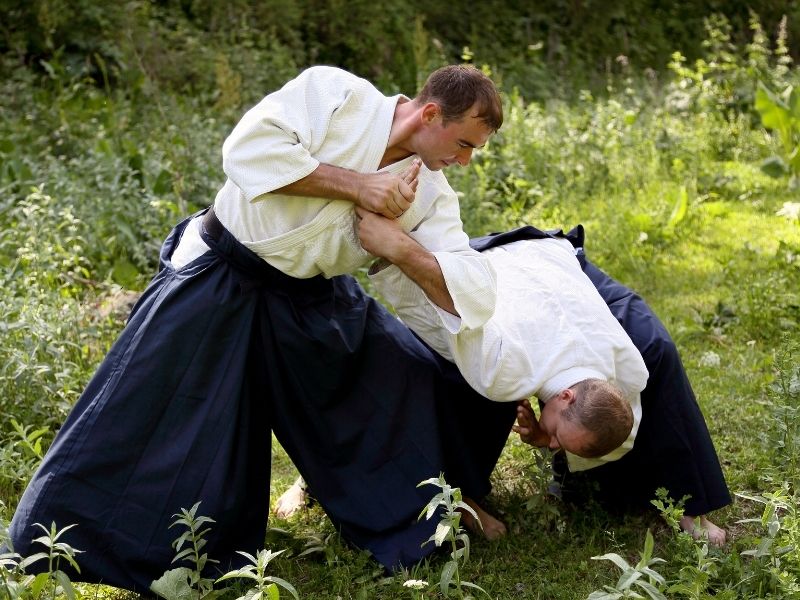
Aikido is a modern martial art that was created in the early 20th century by Morihei Ueshiba. It is based on the principles of budo, which follows the code of ethics of bushido.
Bushido is the code of ethics that samurai follow and teaches justice, courage, benevolence, politeness, honesty, honor, and loyalty.
Aikido is a combination of aikijujitsu, which is a martial art that uses both unarmed and armed fighting techniques, and iai-jutsu, which is a martial art that uses swordsmanship.
Aikido employs unarmed techniques, such as strikes, joint locks, and throws to subdue an opponent. It also makes use of weapons such as knives, swords, and sticks to defend against an attacker.
Aikido practitioners believe that one should only use the amount of force necessary to achieve their goals.
They also believe in using an opponent's momentum against them in order to control them rather than harm them.
Aikido is a challenging but rewarding martial art to study. It requires hefty discipline and dedication to master its techniques.
Thankfully though, the rewards are great for those who persevere, especially since Aikido can provide its practitioners with a sense of confidence and inner peace. It can also teach them how to better defend themselves and others in dangerous situations.
What We Know About Brazilian Jiu-Jitsu
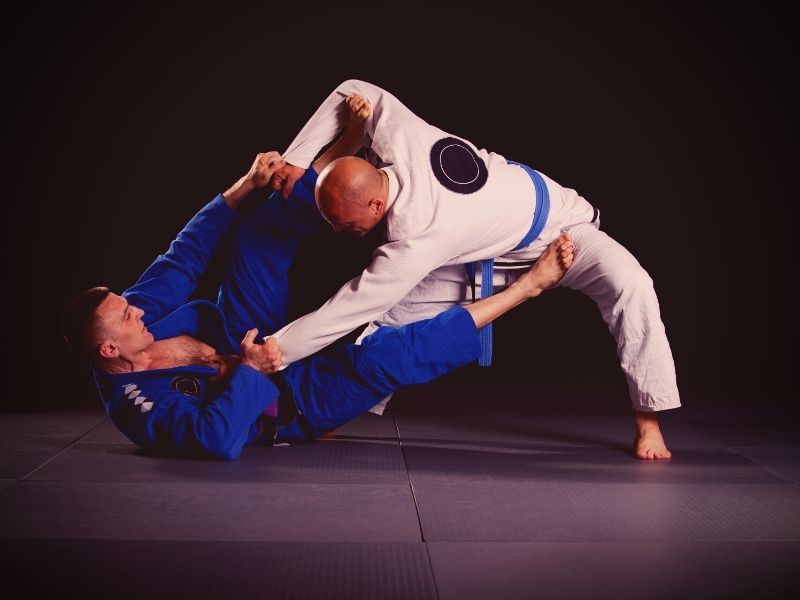
Brazilian Jiu-Jitsu is a grappling-based martial art that has its origins in Japan. It was created by Mitsuyo Maeda, a Japanese martial artist who studied under Judo founder Jigoro Kano.
Maeda eventually immigrated to Brazil, where he taught the techniques of Jiu-Jitsu to Gastão Gracie and his family.
The Gracie family then adapted and modified the techniques to effectively defend against larger opponents.
In the early 1990s, Brazilian Jiu-Jitsu exploded onto the mainstream martial arts scene when the Gracie family founded the Ultimate Fighting Championship (UFC).
Since then, BJJ has been proven to be a successful form of self-defense, both in the UFC and competitions, as well as in practical scenarios.
BJJ focuses on using leverage and technique rather than brute strength to defeat an opponent. This makes it an ideal martial art for smaller individuals who want to be able to defend themselves against larger opponents.
In addition to being an effective form of self defense, BJJ also has a strong emphasis on discipline and respect, both in the academy and outside of it. BJJ is also an amazing workout for people of any age and fitness level.
So regardless of if you're looking for a way to defend yourself or just want to get in shape, BJJ is a great option.
Of course, this is only a brief history and understanding of Aikido and Brazilian Jiu-Jitsu, but if you want to go deeper into either art, be sure to check out the following posts:
Now, back to the comparison...
Let's look at the origins of the respective disciplines and then compare the key elements of their practices. You'll be able to understand some of their similarities and differences a bit better afterward.
| Aikido | Brazilian Jiu-Jitsu | |
| Origins | Japanese | Brazilian |
Key Elements Of Aikido
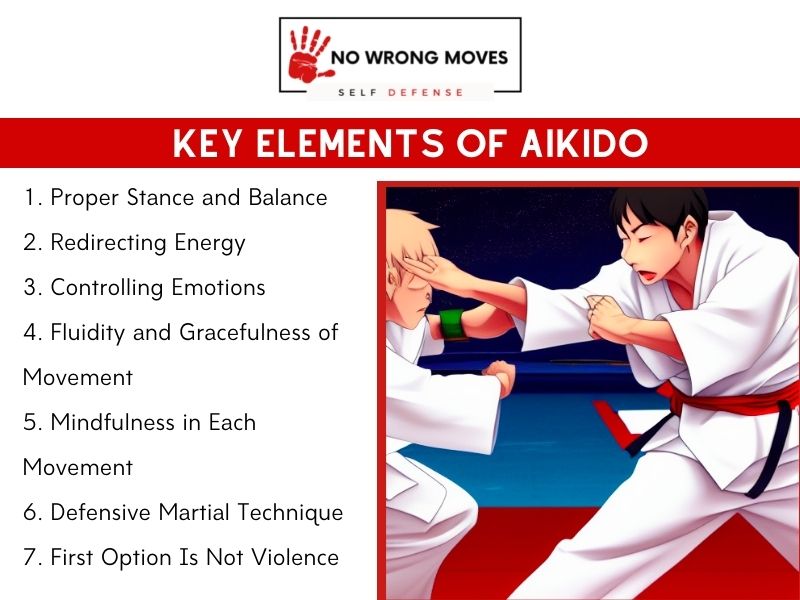
Aikido is a Japanese martial art that focuses on the proper stance and balance of the practitioner. Proper stance and balance are critical components of Aikido, as they provide the foundation for all other techniques.
A stable and balanced stance allows the practitioner to move fluidly and with control, making it easier to perform techniques effectively.
In Aikido, practitioners learn to redirect their opponent's energy rather than using force against them. Redirecting energy is one of the fundamental aspects of Aikido, and it's difficult to separate this idea from the sport itself.
Through properly redirecting an opponent's energy, Aikido practitioners can use their opponent's momentum against them, rather than relying on their own strength.
Apart from physical techniques, Aikido also emphasizes controlling one's emotions. Practitioners learn to remain calm and focused, even in stressful situations.
Aikido also places a strong emphasis on non-violent conflict resolution. The first option in any situation is to find a peaceful resolution, rather than resorting to violence.
Remember that in Aikido, the first option is not violence, and it reflects the overall philosophy of Aikido as a martial art focused on peace and harmony.
Key Elements Of Brazilian Jiu-Jitsu
- Grip Fighting: This is one of the most important aspects of Brazilian Jiu-Jitsu. Without a strong grip, it will be very difficult to submit your opponent. Grip fighting is also a great way to tire out your opponent and make them less effective.
- Takedowns: Takedowns are another hugely important aspect of Brazilian Jiu-Jitsu. There are many different takedowns you can use, but the most important thing is to take your opponent down to the ground where you have an advantage.
- Ground Fighting: Once you have taken your opponent down to the ground, you need to know what to do. This is where ground fighting comes in. There are many different techniques you can use to submit your opponent or make them tap out.
Another thing that I think is important to look at is the different rankings and levels in each art.
If you are looking to take up either Aikido or Brazilian Jiu-Jitsu, regardless of if it's as a hobbyist or to compete, you need to understand the different levels of proficiency in the two sports, as well as what's required for testing and ranking.
Aikido Rankings & Levels

Aikido is a discipline that has different levels, each represented by a different colored belt. The first level is white belt, which is for beginner students. Once you have mastered the basics of Aikido, you can move on to the blue belt, which is for intermediate students.
And finally, once you have mastered the art of Aikido, you can become a black belt, which is the highest level.
There are three degrees as a black belt holder: 1st dan, 2nd dan, and 3rd dan black belt. In order to achieve each of these degrees, you must pass a test that proves your mastery of Aikido.
There are also other ranks and colors that exist outside of the traditional ranking system. In some Western Aikido schools, there are more ranks added in between 1st dan and 2nd dan.
These ranks can be any combination of colors, and it allows for students to be promoted at a more gradual pace and helps to distinguish between students of different ranks.
Brazilian Jiu-Jitsu Rankings & Levels
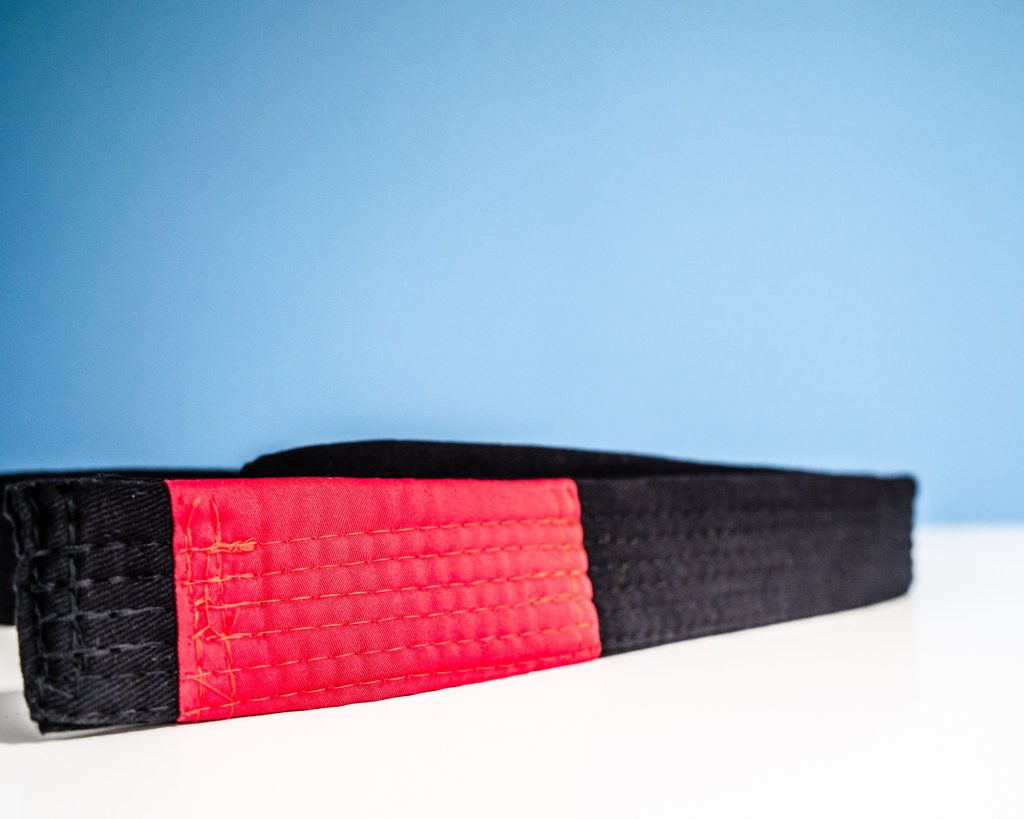
Brazilian Jiu-Jitsu has a unique system of ranks, which can be somewhat confusing for beginners. In order from lowest to highest, the ranks are: white belt, blue belt, purple belt, brown belt, and black belt.
The rank a practitioner holds is not indicative of their skill level; a white belt could be more skilled than a brown belt, and vice versa.
The first belt in Brazilian Jiu-Jitsu is the white belt. This rank is held by any practitioner new to the art and has no prerequisite.
A white belt's training will focus on the basics of Brazilian Jiu-Jitsu. That means learning how to position oneself on the ground, how to execute submissions and how to defend against them.
The second adult rank in Brazilian Jiu-Jitsu is the blue belt. At the blue belt level, students gain a wide breadth of technical knowledge and undertake hundreds of hours of mat-time to learn how to implement these moves efficiently. Definitely not easy!
The purple belt is the intermediate adult ranking in Brazilian Jiu-Jitsu. Aside from the exceptional belts awarded at the highest levels, brown belt is the highest ranking color belt in Brazilian Jiu-Jitsu.
The IBJJF requires a practitioner remain a purple belt for a minimum of 1.5 years before they can be promoted.
The coveted black belt is the highest ranking in Brazilian Jiu-jitsu. To achieve this rank, a practitioner must have an extensive knowledge of all aspects of Brazilian Jiu-jitsu and must have demonstrated proficiency in all areas of the art.
Aikido Vs. Brazilian Jiu-Jitsu Attire
This section is going to compare the clothing and uniforms that practitioners wear in combat. That's right, even the clothes worn in practice for these two martial arts are different!
Aikido Attire:
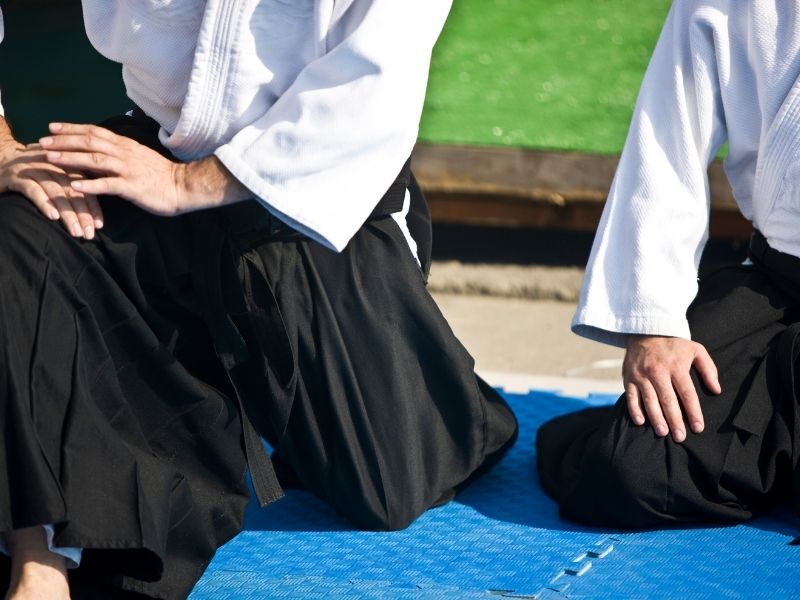
Most aikido practitioners wear a white dogi, or “uniform.” The dogi is a loose-fitting cotton kimono with a belt. In some schools, aikido students also wear hakama, which are pleated trousers that are tied at the waist and fall below the knee.
Male practitioners often don white tabi (socks), while female practitioners often wear white zori (wooden sandals). Some people also choose to practice without any clothes on in order to better feel their body and movements, but this isn't really too common.
Brazilian Jiu-Jitsu Attire:
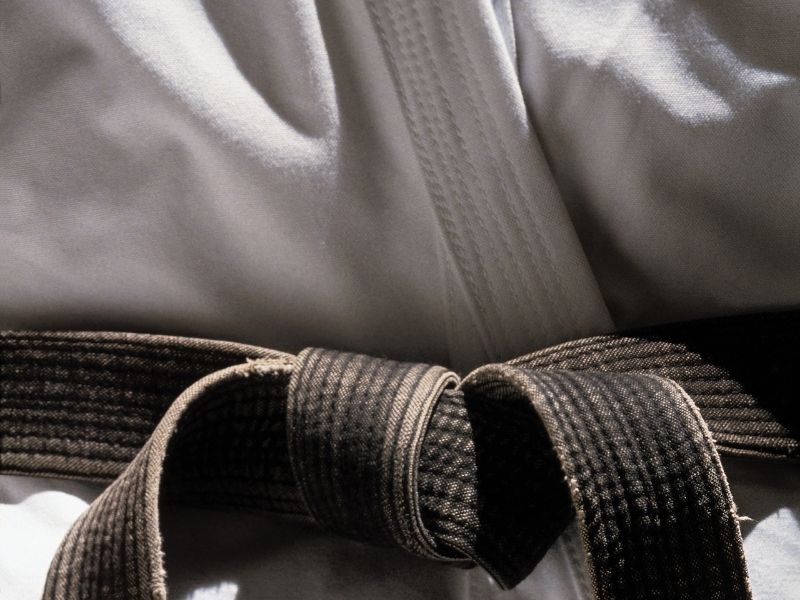
In Brazilian Jiu-Jitsu, practitioners wear a gi. A gi is a type of martial arts uniform made of cotton or similar material. The gi consists of a jacket, pants, and belt.
The jacket is wide open in the front and has a large lapel. The pants are baggy and have a drawstring waistband. The belt is usually white with a colored stripe running down the center.
What A Typical Aikido Training Session Looks Like
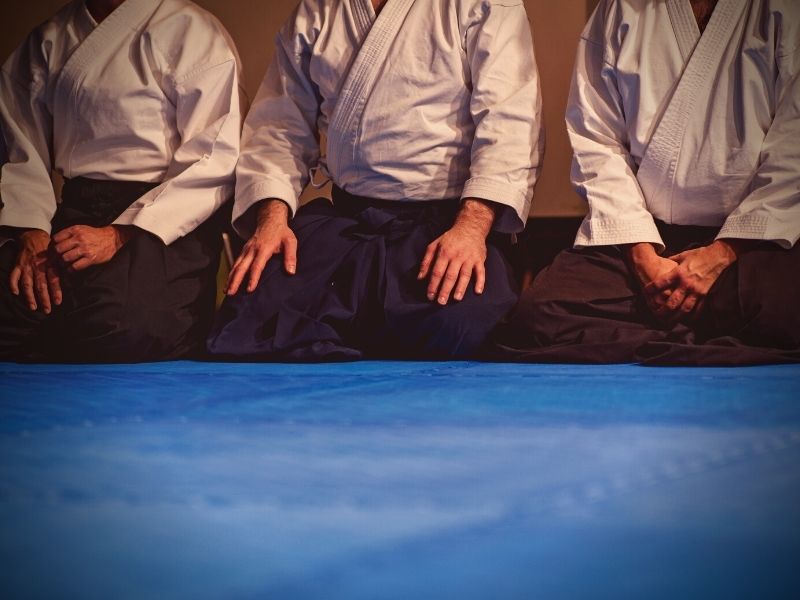
In a typical Aikido practice session, we would bow in respect to our training partners and to the art itself. We would then begin our training by practicing basic etiquette and key principles. We would apply these principles effectively and efficiently in any conflict situation.
Many conflicts are prevented, managed, or resolved using a sense of humor, humility, and good manners. Non-resistance is an essential element of proper technique execution. Intercepting, deflecting, and redirecting an attack utilize the momentum and inertia of the attack.
Non-resistance does not mean being passively overpowered by the attack. And that's really important to know: that's a fear-based response that perpetuates a win-lose dynamic counter to the basic tenets of Aikido.
In addition to practicing techniques, many Aikido dojos also incorporate weapons training, such as with a bokken (wooden sword) or jo (wooden staff). These trainings help increase coordination and focus, as well as improving technique execution.
At the end of practice, we thank our training partners for the opportunity to learn and grow, we and bow out of respect.
People may not immediately see the value in this, but Aikido training fosters a sense of community and camaraderie among its practitioners, creating a healthy and supportive environment for growth in the art.
What A Typical Brazilian Jiu-Jitsu Training Session Looks Like
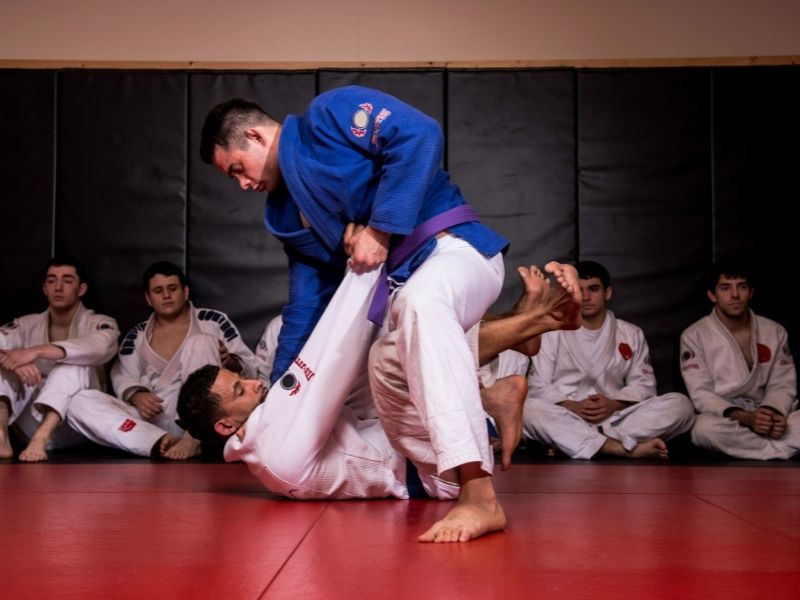
A typical Brazilian Jiu-Jitsu practice session would typically involve a warm-up, drilling, positional sparring, and finally, live rolling. The warm-up would usually consist of light exercises such as running, jumping jacks, and calisthenics.
The drilling would usually involve practicing techniques with a partner. The positional sparring would usually involve two people fighting for dominant positions on the ground. The live rolling would usually involve two people trying to get the other to other.
While rolling, it's always worth remembering to maintain alertness and remain calm. You'll need to be alert in order to adapt to each of your opponent's moves, and panicking will only make things worse for you or easier for your opponent to subdue you.
If the last few sections have been a bit full-on or a bit too technical, you will like this next section! Why? Well, who doesn't love a good martial arts flick?
Both Aikido and Brazilian Jiu-Jitsu have been featured in a number of films and TV shows, so if you want to learn more about them, then entertain yourself with the following 👊
Aikido Movies

These are some of the top movies and shows with Aikido in them:
- The Blind Swordsman: Zatoichi (2003)
- The Last Samurai (2003)
- Kill Bill: Vol. 1 (2003) and Kill Bill: Vol. 2 (2004)
- Street Fighter (1994)
- Ong-Bak: The Thai Warrior (2003)
- The Challenge (1982) TV series
And as for BJJ movies, you can have a look at some of the top ones here:
- John Wick (2014)
- The Raid: Redemption (2011)
- Kickboxer (1989)
- The Legend of Bruce Lee (2008)
- Enter the Dragon (1973)
- Undisputed III: Redemption (2010)
- Never Back Down (2008)
Conclusion: Aikido Vs. Brazilian Jiu-Jitsu
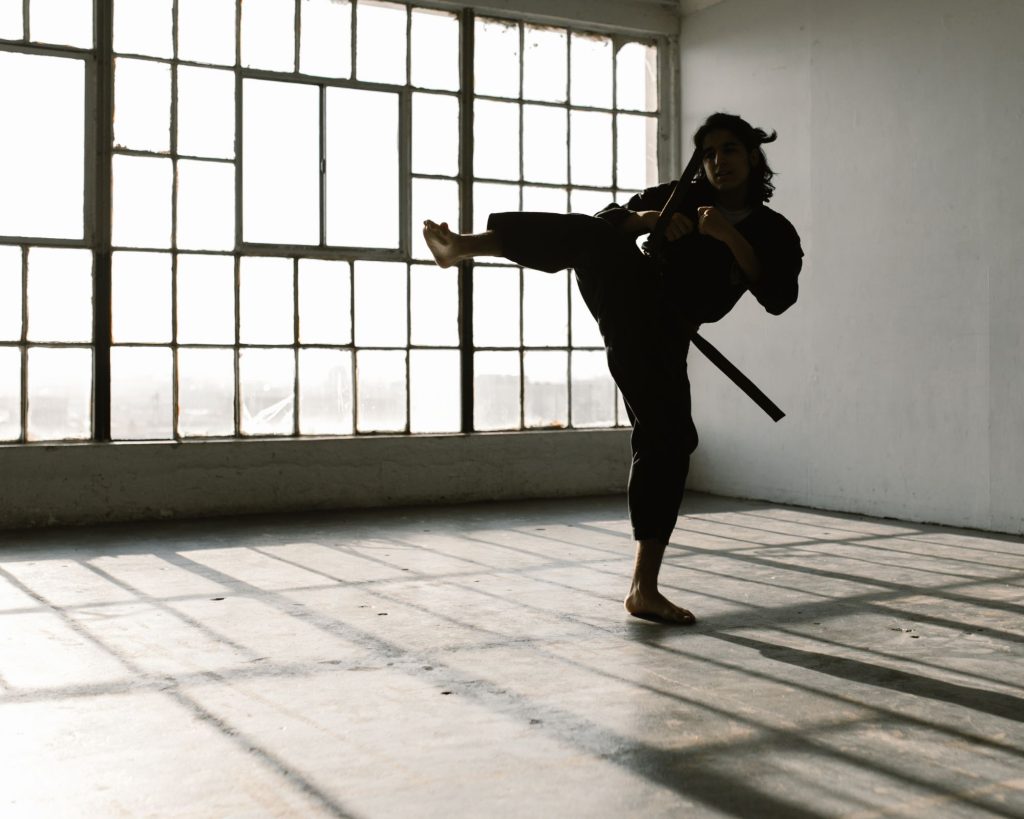
I hope you now have a deeper understanding of Aikido and Brazilian Jiu-Jitsu. In all truth, it really isn't about which discipline is "better." They both have their pros and cons, and they're both worth seriously considering.
If you do plan on starting classes for either, please check out my other related posts, as I have tried my best to answer most of the frequently asked questions related to the art.
Feel free to share this post and any graphics you like, and of course, if you have any questions or thoughts, drop them below or shoot me an email, and I will be happy to assist. 🙂
Eager to take your BJJ training to the next level? Click here!
[author-box-jpx-fitness]
